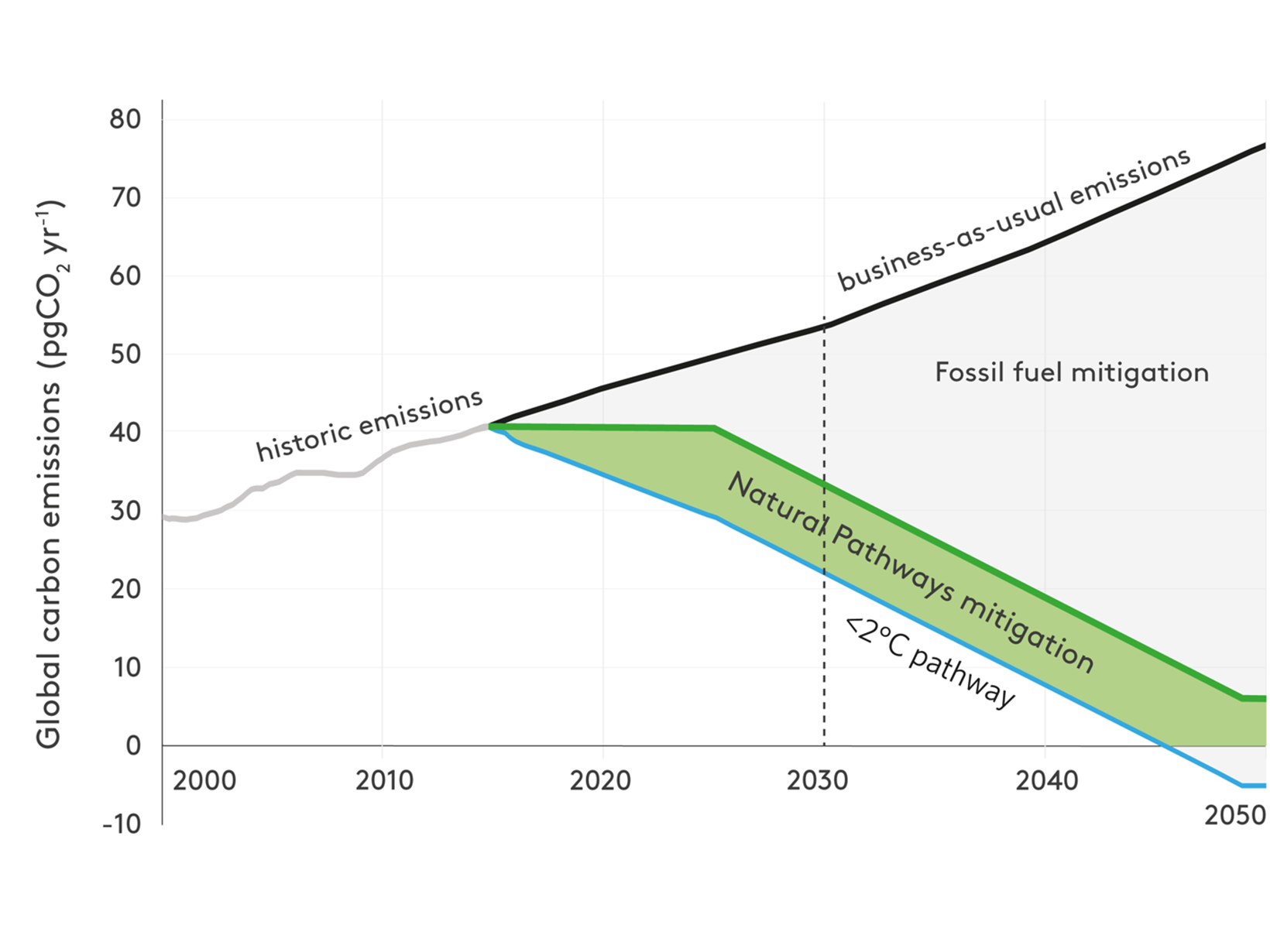Why We Can’t Afford to Dismiss Carbon Offsetting
With just 10 years to prevent catastrophic climate change, we have a moral imperative to harness the potential of carbon projects.
By Bronson Griscom, Sr. Director of Natural Climate Solutions, Conservation International (former TNC Scientist)
Given their potential, you’d think investments in nature would be a key priority? Well, you’d be wrong.
Investments in nature represent just 3% of global finance dedicated to protecting the climate—a frustratingly small proportion.
As a scientist, I prefer to stick to data rather than debate questions of morality. Yet, I can no longer avoid wading into an argument that is consuming the environmental community.
My fellow climate scientists tell us that we have about 10 years to reverse the growing concentration of greenhouse gases in our atmosphere, or face catastrophe.
Carbon offsets, a critical tool for doing this, is hung-up in a dispute over whether offsets are just greenwashing. These criticisms resurfaced recently after UN Special Envoy on Climate Action and Finance Mark Carney detailed a blueprint for expanding the global carbon offsets market.
So, what are carbon offsets and what’s the debate about?
The idea is this: companies or individuals can buy and trade credits to offset a portion of their carbon emissions, with the revenue paid to landowners and communities as an incentive to protect and restore forests. This prevents emissions from the destruction of nature—a major cause of climate change—and absorbs the carbon in the atmosphere.
The trouble is, some critics, many of them my fellow environmentalists, see these investments in nature as a license for corporations to pollute—moral hazards, they claim, that amount to greenwashing.
I can sympathize with this reasoning. Many corporations have assiduously worked against responsible climate and environmental policies, but that tide is turning.

Leading companies now acknowledge their foundational dependence on nature and a stable climate, and recognize the need to protect it by buying carbon offsets—a pragmatic and effective tool. Any further delay in deploying this tool—along with other climate solutions—will plunge humanity into a climate catastrophe of much greater impact.
That’s the real moral hazard we face today.
3 billion metric tons per year
That's how many carbon emissions TNC aims to help the world reduce or store.
Our goals for 2030The science is clear. We must do two things to avoid a climate breakdown: dramatically reduce emissions and rapidly remove carbon that is already in the atmosphere. The majority of emissions cuts must come from ending the use of fossil fuels, but we will not reach our emissions reductions goals without addressing deforestation, another major source of emissions.
High-quality forest carbon projects provide the financing needed to ensure governments and local communities keep their forests standing.
Contribution of Natural Climate Solutions (NCS)
to Stabilizing Warming Below 2°C

In 2017, I published a study with colleagues which found that nature can deliver a third of the emissions cuts needed by 2030 to avert climate disaster.
Not only do carbon offsets support natural climate solutions, like protection and restoration of mangroves—the businesses that invest in them tend to take their climate commitments seriously.
The CDP Climate Change Report 2016 found that companies that bought voluntary carbon credits also made more ambitious emissions cuts compared with companies that did not.
Furthermore, despite the name, “offsets” are not just a one-to-one trade for dodging emissions cuts. Carbon trading brings in lower-cost options from nature, enabling much more climate mitigation “bang for the buck.”
To be sure, carbon offset claims need to be verified. Fortunately, carbon verification systems have significantly improved. We must act now—even while we keep improving carbon verification systems.
Critics who remain unconvinced of the importance of carbon credits might consider how some local and underserved communities have benefited.
20 Pathways of Natural Climate Solutions

Success stories
A successful forest-carbon project in an area of the Peruvian Amazon that had some of the country’s highest deforestation rates has reduced deforestation by 75%, resulting in the avoidance of more than 6 million tons of carbon emissions—the equivalent of taking more than 1 million cars off the road each year.
Some 70% of the local community in this area benefited from this program through better healthcare and agricultural training. Those benefits have real payoffs.
Take Alto Mayo’s coffee crop—income provided by the carbon project has helped the local shade-grown coffee cooperative invest in productivity and quality, and establish access to new markets. Even as the pandemic has wrecked Peru’s economy, the cooperative’s exports grew by 50% in 2020 and since 2016 has earned US$3 million dollars in revenue.
Another carbon offsets program in California has seen more than 100 million credits traded to date, generating more than $500 million in revenue – with most of that going directly to local communities.
The government of Costa Rica, meanwhile, generates $30 million a year for forest conservation through the sale of carbon credits, and has conserved more than 2.5 million acres of its forests to date.
This is exactly why carbon offsets are so important: they create positive incentives that upend the conventional economic motivations that render tropical forests more valuable dead than alive.
Increasing the demand for offsets can generate much needed action to test effective and socially responsible solutions, and scale them up globally through policy reforms.
Quote
Carbon markets create positive incentives that upend the conventional economic motivations that render tropical forests more valuable dead than alive.
In other words, carbon offsets are essential because they provide a simple way to keep, improve and expand forests.
Once a company or other entity has reduced their emissions as much as possible with existing technology, they can buy credits to deploy the most widely available but underfunded climate technology in existence—photosynthesis—thereby compensating for the environmental impact of energy sources such as jet fuel that do not yet have cost-effective alternatives.
Carbon offsets are not a silver bullet. They are no substitute for massive, comprehensive reductions in fossil fuel emissions. As with all innovative climate solutions, there have been successes, some of which I mentioned, and failures. We must be disciplined in learning from both.
Here's the bottom line—nature is our biggest ally in solving climate change, and we will not avert a climate crisis without investments that halt and reverse the destruction of nature.
We have a tool that does just that. To not use it is immoral.
Originally Published at WEF
April 22, 2021
View Original
Global Insights
Check out our latest thinking and real-world solutions to some of the most complex challenges facing people and the planet today.



